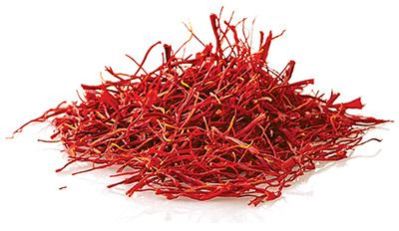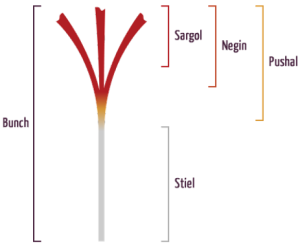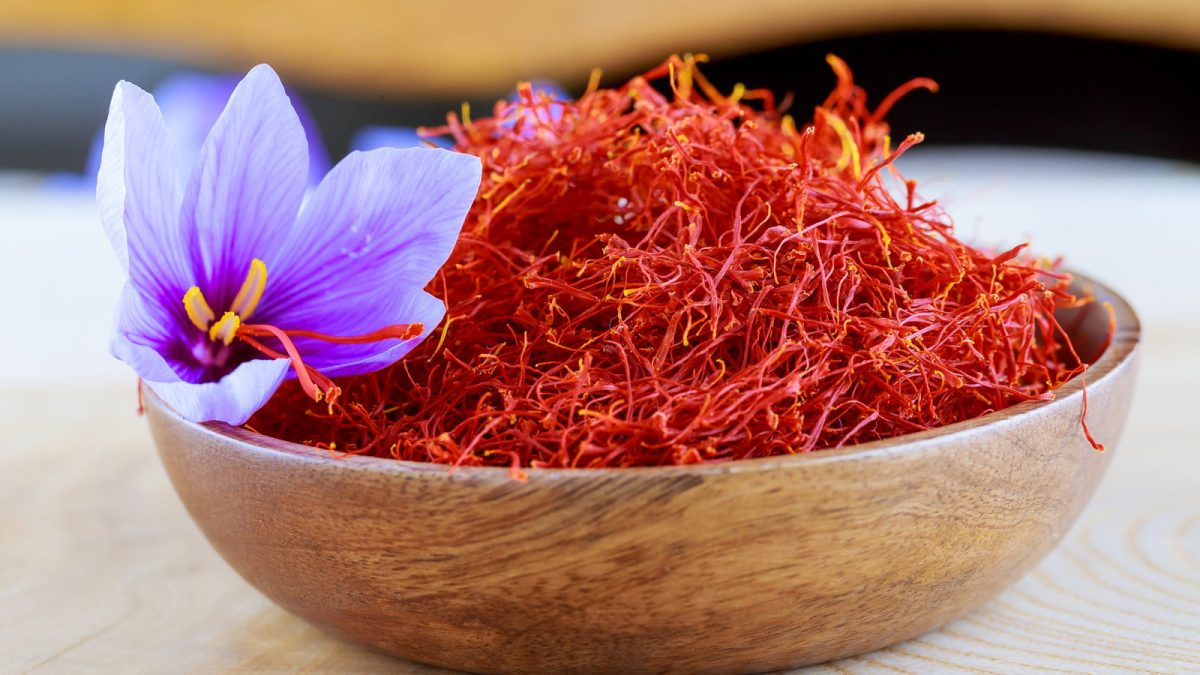Saffron is a spice obtained from the dried filament of the Saffron Crocus (C. sativus L.). Due to the manual labor required to carefully harvest the filaments from the flower, it is also the world’s most expensive spice. It is cultivated in countries such as Iran, India, Spain, Afghanistan, Greece, and Italy. A staggering 90% of the world’s saffron is produced by Iran.
There are 4 main types of saffron:-
- Dasteh
- Pushal
- Sargol
- Negin

Dasteh or bunch saffron is named as such due to its harvesting method where the whole string of saffron is removed from the top of the stigma to the bottom of the style from the flower and dried all together. Thus it has the most cream (white part) compared to the other types of saffron. The higher amount of cream and yellow part means that it has the lowest aroma, taste and the beneficial properties of saffron compared to the other types for the same weight, which explains the cheaper price compared to the other types.

Pushal saffron is separated at where the yellow part of the stigma meets the cream (white part). Therefore, a little white color is sometimes visible with saffron of this type. It is also named pushal (straw) due its straw-like appearance contributed by the way it is harvested. This type of saffron is preferred by buyers due to the higher credibility contributed by its harvesting method (with the attachment of stigma to the cream).
The Sargol saffron is cut right at the tip; thus giving it its name Sargol which means “Top of the flower” in Persian. It is cut above the connecting point of the filament meaning that this type of saffron is loose as the 3 stigmas are not connected. Thus it should only be red in color with no visible yellow style or cream (white part). However, this method of harvesting often contains crumbs and broken threads due to the lower attention span needed to harvest the stigmas which could lead to over-drying during its processing. It also has low credibility due to the high number of adulterated Sargol saffron cases due to its uniform red appearance.
Negin is Persian for diamond, which symbolizes the value of the saffron in this category. It should be very fragrant and deep red in color with no visible white portion of the filament and little to no yellow style while still maintaining the 3 filaments intact. Thus it requires the most attention during harvesting which explains its expensive price.

| Type of Saffron | Stigmas Attached | Visible Stiel | Visible Yellow Part | Quality |
| Dasteh/Bunch | ✓ | ✓ | ✓ | Low |
| Pushal | ✓ | ╳ | Little to no | Average |
| Sargol | ╳ | ╳ | ╳ | Good |
| Negin | ✓ | Little to no | ╳ | High |
Health Benefits of Saffron
- Antitumor
- Anti-inflammatory
- Anti-depressant (has been used as an alternative to drug therapy with little to no side effects)
- Anti-diabetic
- Anti-convulsant
- Antioxidant (prevent/ treat certain cancers)
- Anti-hypertensive (Reduce high blood pressure, linked to its lipid lowering effects)
- Neuroprotective (studies has shown that consumption improved certain neuro diseases such as Alzheimer’s Disease)
To get this product at our e-store, click here https://www.ebaza.com.my/
Click this link directly to product
HEXA Food Sdn. Bhd. is a HACCP and HALAL certified food processing company located in Shah Alam, Malaysia. Established in 1997, we produce more than 100 dry products such as spices, seasonings, herbs, marinades, flour and curry powder. HEXA is a household brand that defines Quality, Affordability and Taste.
Our sales channels includes Retail (hypermarket, supermarket, mini market, etc.), Food Manufacturer, Food Service and Online. If you have any questions regarding our products, please email us at hexafood@hexafood.com.

